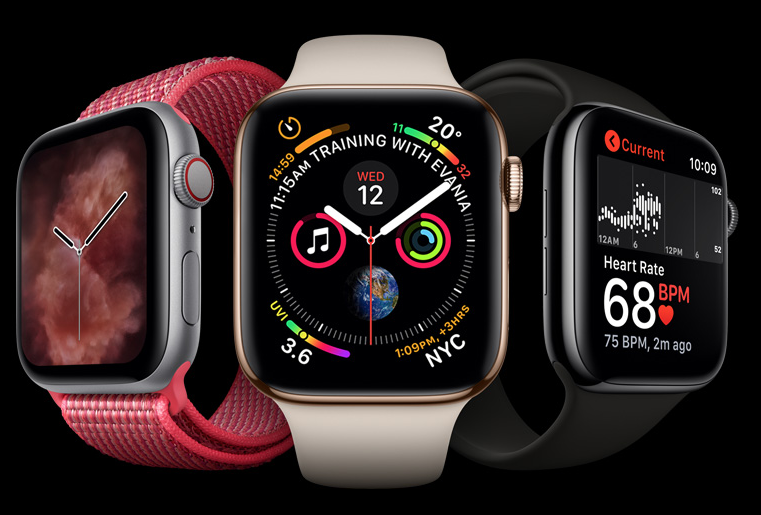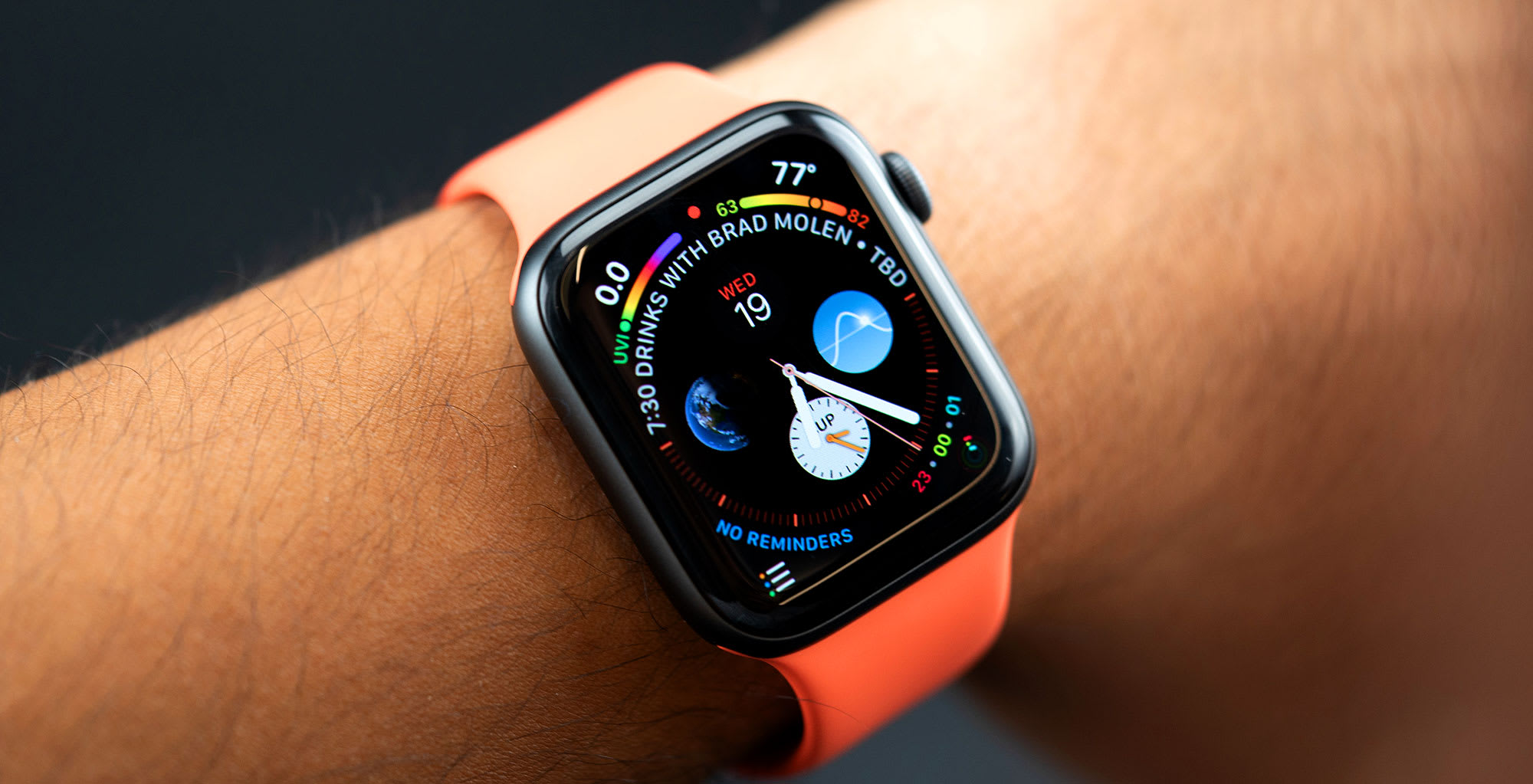Apple Watch Series 4
Sep 14, 2018 Apple Watch Series 4 vs. Choosing between the Series 4 and Series 3 Apple Watch is easier than you might think. One offers the very best Apple has to offer at a premium price. Smiling Clear Case for Apple Watch Series 4 40mm With Buit in TPU Screen Protector - All Around Protective Case High Definition Clear Ultra-Thin Cover for Apple Iwatch 40mm Series 4 (2 Pack) 4.4 out of 5 stars 3,127. Get it as soon as Mon, Jun 24.
- Pros
Large screen. Good call quality. ECG capability. Fall detection. WatchOS 5 brings numerous improvements. Stylish.
- Cons
Expensive. Battery life remains unchanged. No built-in sleep tracking.
- Bottom Line
The Apple Watch Series 4 delivers a category-leading smartwatch experience with more advanced apps and health features than the competition.
There's no longer any question: The Apple Watch Series 4 is the smartwatch to beat. The latest iteration of Apple's popular wearable sports a larger display, better cellular connectivity, and more advanced heart rate monitoring than previous models. It even gives dedicated fitness trackers a run for their money thanks to advanced health metrics and forthcoming ECG readings. The only things that haven't improved are battery life, which remains the same, and price, starting at a hefty $399 and going up from there if you want a cellular model (or a different watch band). But in this case, you get what you pay for. The Series 4 earns our Editors' Choice thanks to its category-leading smartwatch experience and forward-looking health features.
- $199.95
- $329.00
- $329.99
- $299.95
- $299.99
- $275.00
- $299.99
A Very Pretty Penny
Series 4 prices start at $399 for a GPS-only version and $499 for cellular, both with an aluminum case. That's for the 40mm version. For a 44mm model, the prices rise slightly, to $429 and $529. The aluminum case is available in gold, silver, and space gray. If you want a stainless steel case, the starting price jumps to $699 for 40mm and $749 for 44mm GPS-only models. Keep in mind that opting for a cellular model will also carry an additional charge from your wireless carrier. You also need to have an iPhone. Considering the new XS and XS Max phones start at $999 and $1,099, respectively, it simply isn't cheap to be an Apple user.
As for bands, there are plenty of options including Apple's own rubbery
More Screen, Better Cellular
The Series 4 marks the biggest tweak to the Apple Watch design since it first launched in 2014, in the form of a larger display. The watch comes in 40mm and 44mm case sizes, up from 38mm and 42mm. This translates to about 30 percent more screen real estate, which, at a glance, doesn't seem like a whole lot. There is less of a bezel, but I initially had trouble seeing much of a change between the 38mm Series 3 and our 40mm Series 4.
The difference became much more apparent after using the Series 4 for a few days. You can see more information at a glance, which makes reading easier, especially when it comes to text messages and app notifications. And you can now fit eight complications—applets that do something other than tell time—on a watch face, up from five. The additional screen real estate also helps animations stand out. The effects
Visually, the rest of Apple's design tweaks are relatively minor. For cellular versions, the controversial red dot on the digital crown has been softened into a subtler red ring. It also protrudes less. Haptic feedback has been added for when you use the crown to scroll, producing a faint vibration to make it feel more like a physical mechanism, but I found it a bit too subtle to make a difference. The microphone has been moved to just under the crown, which helps improve call quality. And the speaker is louder, which makes phone calls and Siri easier to hear.
The most notable change on the inside has to do with heart rate monitoring. The optical sensor on the underside of the watch is now surrounded by an electrode. This will enable electrocardiogram readings in Apple's upcoming ECG app. The Series 4 also sports an improved accelerometer and gyroscope, which are essential for the new fall detection feature.
Another improvement is processing power, thanks to the new S4 chip with dual 64-bit processor, which really shows in app loading times.
Call quality is even better. We really liked the Series 3, the first Apple Watch with standalone cellular capability, but it was plagued by dropped calls and poor sound quality. In testing the Series 4, I made several phone calls, none of which dropped. And the new microphone placement does indeed help with call quality, as does the louder speaker, for a more intelligible experience on both ends.
One thing that hasn't improved is battery life. The Series 4 still sports the same estimated 18 hours as its predecessors. Apple refers to this as all-day battery life, and it's true that the watch won't die over the course of a long day, but you still have to charge it every night, which rules sleep tracking out of the equation. As such, Apple doesn't include its own sleep tracking app, though you can download a third-party app if you want to give it a try.
A New OS and Apps

Phone calls aren't the only way to talk with the Apple Watch, thanks to the Walkie Talkie app introduced with watchOS 5. Walkie Talkie lets you have a one-on-one chat with anyone in your contacts with an Apple Watch. You simply tap a contact's name, record a transmission, and send it. It's a fun feature that mimics the two-way radios of yesteryear (minus the live aspect, considering messages are recorded), and I can see it being helpful in crowded areas like concerts or conventions. It's limited to how many of your friends have an Apple Watch (it's compatible back to Series 1 as long as it's running watchOS 5), but it's a fun new take on voicemail.
Siri has also been improved with watchOS 5. You can integrate the voice assistant into apps, like Citymapper, and anecdotally, the Siri watch face seems to learn your routines quicker than it did on watchOS 4. And instead of having to say, 'Hey Siri,' you can now simply raise your wrist, though I found that doing this worked only about two-thirds of the time.
Apple Watch Series 4 Manual
As far as smartwatch app ecosystems go, Apple's remains the most extensive by far. While it's still missing some key players like Spotify, you can find apps like American Airlines, Citymapper, Delta, Lyft, Neato Robotics, Philips Hue, Strave, and Uber, among many, many others. Comparatively, the apps available for Google
Apple added music streaming earlier this year via Apple Music. It's limited to playlists you create on your phone beforehand, but watchOS 5 brings a Podcast app, for greater media options for anyone looking for a truly standalone wearable.
Apple Goes All-In on Health
Perhaps the most important new feature here is the FDA-approved electrode-based heart rate monitoring. When the ECG app arrives later this year, you'll be able to put your finger on the digital crown for 30 seconds to receive an ECG reading that you can export to PDF to share with your doctor. Since this feature isn't yet available, we didn't test it, but we'll update this review with our findings as soon as it comes out.
How We Test Fitness Trackers
More passively, you also get notifications if your heart rate is too low or too high while at rest. This is a more precautionary feature, and since I'm in relatively good health, I never received a warning.
With the Series 4's improved accelerometer and gyroscope, Apple has also introduced fall detection. According to Apple, if the watch detects a hard fall and subsequent inactivity, it will trigger an emergency SOS call. I tried my best to trigger this
The new accelerometer and gyroscope also translate to excellent accuracy in fitness testing. In a one-mile treadmill walk at 3.5 miles per hour, the watch logged 2,097 steps compared with the Yamax SW-200 Digi-Walker's 2,120, for a negligible difference of 1.9 percent. Similarly, on a controlled one-mile run at 5.0mph, it logged 1,990 steps to the
Heart rate monitoring also proved accurate in testing, but this is somewhat misleading. During the controlled treadmill tests, the Apple Watch was always within five to 10 beats per minute of a Polar H10 chest strap, which is great. For resting heart rate, however, the watch's battery doesn't last long enough to wear it to sleep, which you need for an accurate assessment of your resting heart rate. Because of this, the Apple Watch reported my resting heart rate as 67bpm, compared with the 60bpm offered by the Fitbit Versa, which I was able to wear to sleep.
WatchOS 5 also brings fitness improvements in the form of more advanced metrics, automatic activity tracking, and competitions with other Apple Watch users. You can now track metrics like running cadence, pace alerts, real-time splits, and rolling milestones. Automatic workout detection proved to be hit-or-miss—walks recorded by the Fitbit Versa
The Best Smartwatch, Period
With the Series 4, Apple widens the gap between its namesake wearable and other smartwatches on the market. Despite its unimpressive battery life and significant cost, you get a big, crisp display, a fast processor, good call quality, excellent fitness tracking features, and innovative heart health capabilities. Other wearables on the market boast some of these features, but none can claim them all, or do so in such an elegant package. And let's not forget that Apple still has the largest third-party smartwatch app ecosystem, by far. All of that combines to make this the first Apple Watch to earn our Editors' Choice.
If you already have an Apple Watch, should you upgrade? That depends. If you own a Series 3, I wouldn't rush to trade it in unless you use it to make calls all the time or see the upcoming ECG feature as a must-have feature. But everyone with a Series 1 or 2
Apple Watch Series 4
Bottom Line: The Apple Watch Series 4 delivers a category-leading smartwatch experience with more advanced apps and health features than the competition.
 Please enable JavaScript to view the comments powered by Disqus.blog comments powered by Disqus
Please enable JavaScript to view the comments powered by Disqus.blog comments powered by Disqus